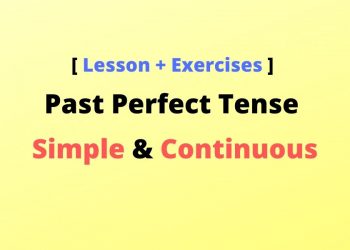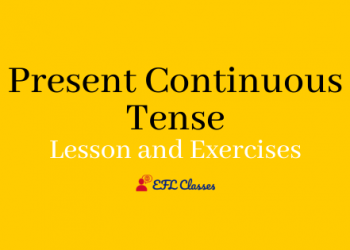Table of Contents
What is simple present tense?
Simple present tense is a grammatical tense that is used to talk about daily activities and habits in general.
It usually refers to our daily routine; things that we regularly do in our life.
It is the first tense in the group of other present tenses that have a relation with the present time. These tenses are in order: Present Continuous tense, present perfect simple and present perfect continuous.
All verbs in these tenses are conjugated in four forms:
- Affirmative Form
- Negative Form
- Interrogative Form
- Interro-negative form
Adverbs used with simple present tense
There is a number of adverbs that can be used with the simple present tense. They add more information about the frequency of the action.
These adverbs of frequency are: always – usually – often – sometimes – rarely – never
Examples:
-
Affirmative form:
I always go to school on foot.
He/she sometimes meets his/her friends at the cafe.
We/they often play football in the university campus.
-
Negative form:
I do not always go to school by bus.
He/she does not speak Spanish.
We/they do not study Hebrew language at school.
-
Interrogative form:
Do you always go to school on foot?
Does he/she speak Chinese?
Do we/they do our/their work every day?
-
Interro-negative form:
Do you not usually go to school on foot? (Don’t you usually go to school on foot?)
Does he/she not speak English? (Doesn’t he/she speak English?)
Do we/they not do our/their work every day? (Don’t we/they do our/their work every day?)
The auxiliary “do” for simple present tense
In English grammar, there are three major auxiliaries: do – be – have
Each one is for specific tenses. For example:
The auxiliary do is used with: simple present tense and simple past tense only (it always appears in the negative form, the interrogative form and the interro-negative form as illustrated in the examples above).
The auxiliary be is always used with: present continuous, past continuous, future continuous, present perfect continuous, past perfect continuous, and future perfect continuous.
The auxiliary have is used with: present perfect simple, present perfect continuous, past perfect simple, past perfect continuous, future perfect simple, future perfect continuous.
The addition of ‘-s’ or ‘-es’ with verbs in the third person singular
In simple present tense, verbs in the third person singular take either ‘-s’ or ‘-es’.
For example:
- Verbs like: speak, write, like, listen, swim, talk, walk …. BECOME [ speaks, writes, likes, listens, swims, talks, walks…. ]
- Verbs ending in -SS , -SH , -X , -CH , -O take -es , for example:
He passes – she washes – it xeroxes – he watches – she goes/does
With verbs ending in ‘y’ preceded by a consonant, we change ‘y’ into ‘i’ and we add ‘es’
For example: fly —> flies – cry —> cries – spy —> spies
With verbs ending in ‘y’ preceded by a vowel, we simply add ‘s’ without any changes.
For example: play —>plays – pray—>prays – buy—>buys
Exercises: Test yourself with these short exercises
Put the verbs between brackets in the correct form:
- They (wish) …………………….to speak to you.
- The bus (pass) ……………………my house every hour.
- She (worry) ……………………….too much.
- This carpet (not/match) …………………………….the curtains.
- Your child (rely) ………………………….on you.
Read the following sentences in the third person singular:
- They usually catch the 8.10 bus.
He ……………………………………………………………………………………………..
- They fly from London to Edinburgh.
She ……………………………………………………………………………………………
- They wash the floor every week.
She ……………………………………………………………………………………………
- They realize the danger.
He …………………………………………………………………………………………….
- I cash a cheque every month.
He …………………………………………………………………………………………….









![ESL Worksheets and Activities for Kids [PDF Book]](https://eflclasses.com/wp-content/uploads/2019/12/ESL-Worksheets-and-Activities-for-Kids-PDF-Book-120x86.jpg)

